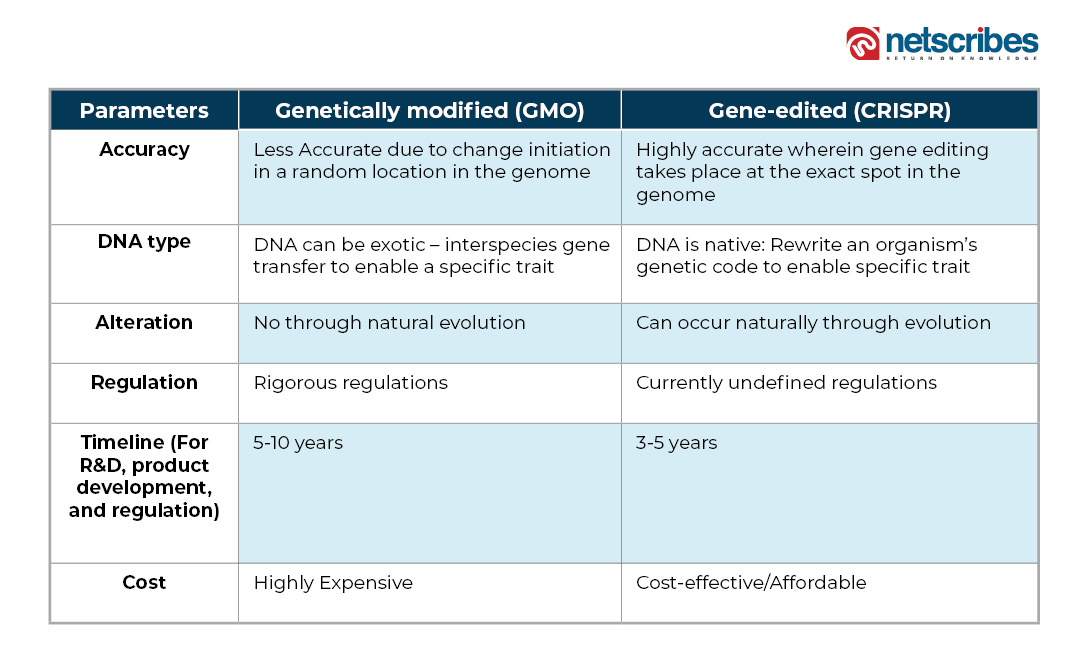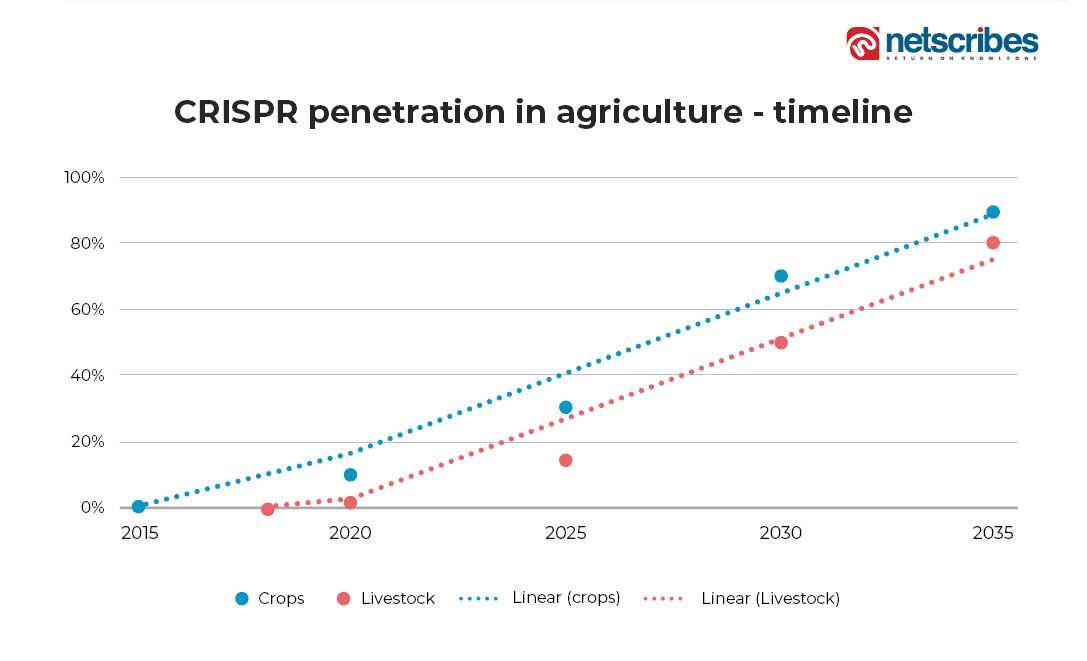CRISPR crops: The next frontier in sustainable agriculture and global food security
With the global population projected to reach 10 billion by 2050, ensuring food security has become a pressing concern. Agricultural production needs to increase by 60%-70% to meet rising food demands. However, climate change, geopolitical issues, and limited resources pose challenges to achieving this goal. The current crop harvest is insufficient, and meeting the goal of zero hunger by 2030 will require larger and more consistent crop production. Clustered regularly interspaced short palindromic repeats-associated protein (CRISPR-Cas) technology is being widely used for plant genome editing. Here’s how CRISPR-Cas technology is transforming crop improvement, addressing these challenges, and revolutionizing the agricultural industry to ensure global food security.
The potential of CRISPR
CRISPR-Cas technology is a powerful tool for genetic improvement in agriculture. It offers precise gene editing capabilities, enabling researchers to enhance crop yield, reduce resource requirements, and confer resistance to environmental stressors like drought and cold. Unlike previous genetic modification techniques, CRISPR enables targeted modifications at specific locations in the genome, ensuring higher accuracy and efficiency.
GMO vs CRISPR
Genetic modification and gene editing are closely related terms but are not mutually exclusive, making it difficult to define them. The table below provides some subtle yet meaningful distinctions between the two terms:

Impact on crop quality and sustainability
Crop quality plays an important role in determining the market pricing of crops. CRISPR-Cas in farming is focused on improving different crop qualities which are as follows:
- Crop physical appearance (shape, size, and color modification)
- Crop texture quality
- Prolonging shelf life
- Improving palatability
- Improving eating and cooking quality
- Improving flavor
- Biofortification of nutrient elements or micronutrients (such as carotenoid content)
CRISPR-Cas technology offers tremendous potential for addressing global food security challenges. By revolutionizing crop improvement, it enables the development of climate-resistant crops, enhances crop quality, and promotes sustainable agricultural practices. While there are challenges to overcome, the future of CRISPR-edited crops looks promising in ensuring a more secure and abundant food supply for the growing global population.
Related reading: Eating smart: How AI is transforming the food and beverage industry
Currently, the research emphasis is mainly on the production of biotic/abiotic stress-tolerant crops. Biotic stress includes bacterial, fungal, and viral plant diseases and abiotic stress includes temperature, rain, humidity, etc. Both biotic and abiotic factors directly affect the yield of crops and the crop’s shelf-life which are crucial for food security issues. For example, Cacao plantation in West Africa is under threat due to climate change wherein the high temperature supports the growth of mealybug leading to cacao swollen shoot virus disease. CRISPR could enable the Cacao to develop resistance to Mealybug pests thus preserving cacao trees and avoiding their wastage.
The technology simply edits food instead of changing it such as in the case of mushrooms wherein the mushrooms wouldn’t turn brown after cutting. So instead of adding a new gene, the scientists just disabled the gene that causes mushrooms to brown.
CRISPR has also increased the yield of crops such as corn kernel and rice along with reducing the environmental impact of agriculture such as minimized water usage for corn, limited methane gas release in rice paddies, drought, and stress-resistant crop varieties, etc.
CRISPR is an economically viable and low-cost technique as compared to GMO and other conventional gene-modification processes thus making it affordable and beneficial for the small-scale agriculture industry.
Along with crops and plants, livestock is also one of the integral parts of the agricultural industry, especially in developing countries wherein cattle are still used for farming activities. Livestock can be considered as the agricultural sub-industry CRISPR technology is actively being employed to improve livestock such as TB-resistant cattle, faster and precise animal breeding, increase milk production, etc.

As a technology, CRISPR offers tremendous potential for addressing global food security challenges. By revolutionizing crop improvement, it enables the development of climate-resistant crops, enhances crop quality, and promotes sustainable agricultural practices. While there are challenges to overcome, the future of CRISPR-edited crops looks promising in ensuring a more secure and abundant food supply for the growing global population.
To make well-informed business decisions that drive commercial growth and profitability, it is essential to have a comprehensive understanding of the current trends in the food and agriculture industry. At Netscribes, we offer research solutions tailored to the tech-enabled market, enabling you to succeed. To explore how our services can benefit your business get in touch with us.

